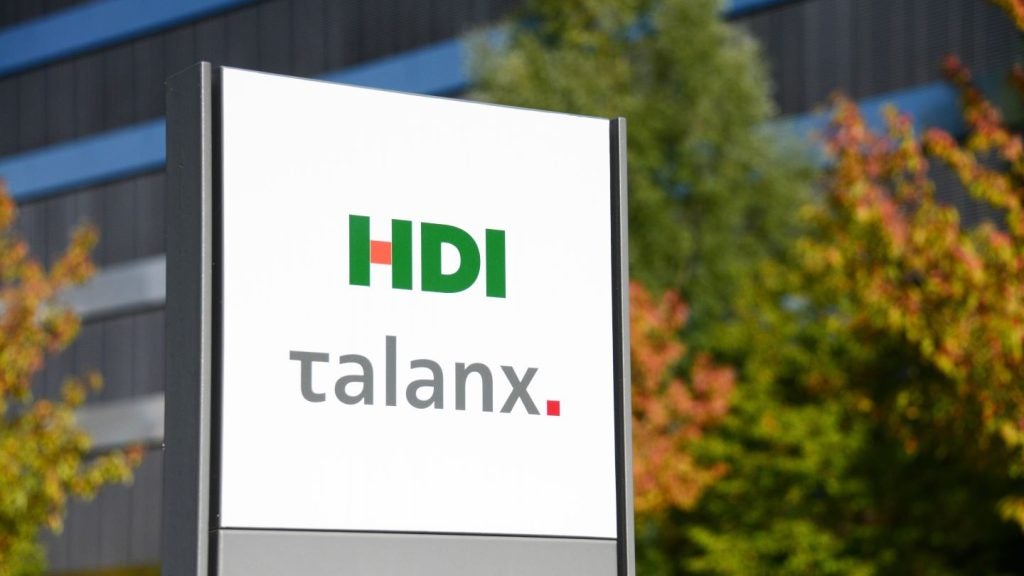Switzerland’s life industry is facing pressure on all
fronts. In the domestic market it faces a mounting political threat
to the viability of its biggest segment, occupational pensions,
while in the international market the country’s new solvency regime
is placing insurers at a distinct competitive
disadvantage.
 Three years ago, Erich Walser, the chairman of the Swiss
Three years ago, Erich Walser, the chairman of the Swiss
Insurance Association (SIA), hailed a 3.1% increase in the Swiss
life industry’s domestic premium income as a clear sign the
domestic market was in “the midst of a growth turnaround”.
In 2011, however, there is still no
convincing evidence that the domestic industry, despite weathering
the global economic crisis, has entered a new dynamic growth
phase.
Premium income in 2009 actually
decreased marginally (0.6%) compared with 2008 to CHF29.42bn
($31.8bn), but went on to record an increase of 2.4% in 2010 to
CHF30.13bn, according to the Swiss Financial Market Supervisory
Authority (FINMA).
Total growth in premium income
between 2007 and 2010 of 4.95% was recorded against the background
of inflation rates of 2.43% in 2008, a negative 0.48% in 2009 and
0.69% in 2010. This represented an overall increase in prices of
just over 2.6% between 2007 and 2010.
While the achievement of overall
growth in the three years 2008 to 2010 represented a marked change
from declines registered in every year between 2003 and 2007, Swiss
domestic premium income still remains well below levels of up to
CHF35bn recorded more than a decade ago.
The lacklustre performance of the
domestic market has seen life insurance premium penetration slide
from 7.95% of GDP in 2001 to 5.5% in 2010, according to data from
Swiss Re. In terms of penetration, in 2001 Switzerland ranked
second in Europe after the UK. In 2010 it ranked 10th.
Occupational pensions
bolster growth
 As the primary driver of domestic premium income growth in
As the primary driver of domestic premium income growth in
2010 Swiss life insurers rested heavily on private occupational
pension schemes.
According to FINMA, in 2010 private
pension schemes generated total premium income of CHF20.745bn, an
increase of 5% compared with 2009 and the highest growth rate in
eight years. Occupational pension schemes represented 68.9% of
total premium income of Swiss-domiciled life insurers in 2010, up
from 67.1% in 2009, 66% in 2005 and 63.3% in 1999.
The domestic industry’s second
biggest segment, individual life insurance, did not fare as well in
2010 with its premium income falling 6.8% compared with 2009 to
CHF4.58bn.
Although individual life premium
income achieved growth of 7.5% in 2009, the decline in 2010
continued a longer-term trend that has seen individual life premium
income decline from CHF7.67bn in 1999.
The individual life segment’s
contribution to total domestic premium income fell from 24.5% in
1999 to 15.2% in 2010.
According to the SIA, individual
life business is being hampered by a 2.5% stamp duty on single
premium business. The duty “considerably inhibits demand for such
products”, the industry body noted in a release.
Individual annuity premium income
fell particularly sharply in 2010, coming in 30.5% below the
previous year’s level at CHF871m.
 This also marked the continuation of an extended trend that
This also marked the continuation of an extended trend that
has seen individual annuity premium income fall from CHF2.34bn in
1999 and the segment’s contribution to total premium income decline
from 7.5% in 1999 to 2.9% in 2010.
Also reflecting a significant
setback in 2010 was premium income from conventional unit-linked
products. Premium income from this segment came in at CHF1.75bn,
down 35.8% compared with 2009.
Conventional unit-linked business
peaked in 2005 when it contributed premium income of CHF3.32bn, or
11.1% of total premium income in that year. This was almost double
its 5.8% contribution in 2010.
However, on a positive note, within
the unit-linked universe there was a significant increase in
premium income from non-conventional unit-linked products in
2010.
Specifically, their premium income
contribution increased 19-fold from CHF67m in 2009 to almost
CHF1.3bn in 2010. According to FINRA, non-conventional unit-linked
products are linked to internal insurers’ investment positions and
include savings products which provide a mix of guaranteed benefits
and options tailored individually to the policy holders’ needs.

Challenge to occupational
pensions
Occupational pension schemes form a
key element of a three-pillar pension system in Switzerland.
The first pillar is provided by a
state pension system which is intended to provide a basic
livelihood to retirees. Occupational pensions represent the second
pillar and are compulsory for all employed people. Together with
the state pension, occupational pensions are targeted to cover at
least 60% of a person’s final salary.
The third pillar of the pension
system is represented by personal, voluntary pension contributions
which enjoy certain tax benefits.
In this year’s annual review of the
Swiss insurance industry, Walser emphasised the vital role life
insurers play in the Swiss pension system. He pointed specifically
to the 150,000 small and medium-sized enterprises with a total of
around 1.5m insured pension scheme members.
Walser noted that the insurance
industry is indispensable for these smaller businesses because they
are either unable or unwilling to bear the risks associated with
occupational pension schemes which insurers bear as part of their
full benefit coverage model.
He continued that, despite its key
role, the insurance-driven occupational pension segment is facing a
major challenge.
“The full insurance model of life
insurers is crucial for our economy,” said Walser.
“But this has not stopped certain
policymakers from steadfastly attempting to edge life insurers out
of occupational benefits altogether.
“With endless new proposals for
substantial interventions by the state, they are trying to make the
full insurance model as unattractive as possible for providers, of
which, it must be said, there are ever fewer.”

As an example of the challenge to
insurers in the occupational pensions sector, Walser said that,
following a parliamentary initiative, the life industry “has once
again found itself in the sights of the supporters of state
regulation”.
Expanding on this, Walser stressed:
“It is obviously not enough for them that the state already makes
exceptionally high demands on occupational pension schemes.
“In their opinion, it should
additionally ensure with ever harsher conditions that it becomes
extremely unattractive or even impossible for providers to be
active in this area.
“They want to pave the way for
uniform state solutions or, in extremis, for the total abolition of
the second pillar in favour of the pay-as-you-go old age and
survivors’ insurance.”
It is not only in the occupational
pensions segment that Swiss life insurers are facing a challenge,
said Walser. Another threat, he added, comes from what he termed
“state monopoly insurers” who have been allowed to expand their
business areas and “poach in the free insurance market”.
As an example, he said the state
buildings insurers of the cantons of Bern and Glarus have obtained
extensive authorisations to expand their insurance business.

A Swiss finish to
solvency
Insurers in the European Union (EU)
are still readying themselves for Solvency II capital requirements
scheduled to be introduced in January 2013.
Well ahead of the EU pack, Swiss
insurers are already subject to the country’s own version of the
new regulatory regime, the Swiss Solvency Test (SST) which came
into force on 1 January.
This SST requires private insurers
to measure all quantifiable risks by economic criteria and back
them with sufficient regulatory capital, explained Walser.
He continued that Swiss insurers
are broadly in favour of the SST’s form of risk-based
supervision.
However, Walser stressed that,
while the definitive details of Solvency II are as yet unknown
making a conclusive comparison with the SST impossible, it is clear
a ‘Swiss finish’ imparted to the regulatory regime is emerging in
comparison with the provisions of Solvency II.
Specifically, said Walser, the
capital requirements for Swiss insurers are much higher than those
in the EU under Solvency II.
“This inevitably leads to unfair
competition between Swiss insurers and companies based in the EEA
[European Economic Area],” Walser stressed.
“Such market distortions are
unacceptable and must be corrected.”
Expressing a similar view, Swiss
Life Group CEO Bruno Pfister said that the insurer welcomes the SST
in principle.
“Compared to the previous rules,
under Solvency I, it definitely represents progress,” said
Pfister.
On a critical note, he continued:
“We do not yet agree with the approach taken by the regulators to
the SST. Our views are not fundamentally different, but the
calibration of the model is an issue.”
In particular, Pfister emphasised,
some of the valuation approaches “do not make sense”. He also
stressed that the launch of the SST at least two years ahead of the
launch of Solvency II was premature.
“This puts the Swiss insurance
industry at a disadvantage,” Pfister said.
Walser’s and Pfister sentiments are
reinforced by a survey of Swiss insurance companies undertaken by
professional services firm Ernst & Young (E&Y).
Conducted in May, the survey
included 50 insurance companies – 17 life insurers, 10 reinsurers,
13 non-life insurers and 10 health insurers.
In broad summary, E&Y noted the
survey’s findings revealed the SST has a “significant effect on
companies’ business models”.
Among the survey’s findings was
that 56% of insurers believe SST will increase the demand for
capital while 36% were of the opinion that it will have the same
impact on hybrid capital. In addition, 46% of insurers also expect
that the new solvency regime will increase demand for reinsurance
coverage.

Hans-Jürgen Wolter, head of
European actuarial services at E&Y, believes insurers will
comply with SST requirements with a mixture of additional own and
hybrid capital, and with additional reinsurance capacity.
Thomas Brotzer, a partner in
E&Y’s insurance practice, noted that life insurers expect SST
to have a negative impact on the cost of guarantees offered for
their insurance products. These include interest and longevity
guarantees.
“If the additional guarantee costs
cannot be passed on to customers, companies will no longer have an
economic incentive to offer any guarantees whatsoever,” said
Brotzer.
In addition to this negative impact
of the SST in its current form, most life insurers surveyed also
indicated they think it likely that SST will result in more
occupational pension insurers abandoning the full benefit coverage
model or exiting from the group insurance market altogether.
In terms of the Swiss insurance
industry’s international competitiveness, E&Y’s survey revealed
that 60% of the Swiss insurers surveyed pointed to distortions of
competition to their detriment.
Two thirds of insurers surveyed
were in favour of aligning requirements under the SST with those of
Solvency II.
The alignment of the SST and
Solvency II is clearly of vital importance to Swiss insurers with
significant international business.
E&Y noted: “Reinsurers are
‘vehemently in favour’ of SST being amended so that they may
achieve recognition as reinsurers in EU countries.”
Swiss reinsurers derive about 95%
of their premium income, which totalled over CHF41bn in 2010, from
foreign business.
From an SIA standpoint, Walser said
that aligning the SST with Solvency II is a key objective. He added
that FINMA has affirmed it will actively lobby for Swiss insurance
supervision to be recognised as equivalent to the European
supervisory regime under Solvency II.
Global
footprint
For the Swiss insurance industry,
the importance of remaining internationally competitive cannot be
overstated.
Across all classes, business data
from the SIA reveal, in 2009, the insurance industry recorded total
premium income of CHF183.2bn of which CHF55.9bn (30.5%) was
generated in Switzerland and CHF127.3bn (69.5%) from international
operations.
In the life insurance segment in
2009, foreign business accounted for CHF42.2bn in premium income,
almost 59% of the segment’s total premium income of CHF71.6bn.
For many of Switzerland’s major
life insurers’ foreign business has also been the primary driver of
growth for over a decade. Specifically, while domestic premium
income between 1999 and 2010 decreased by CHF1.37bn (4%), foreign
premium income during the same period increased by CHF16.5bn.
The latter figure represented an
increase of 64% while the CAGR over the 10 year period was just
over 5%. Over the same period total life insurance premium income
globally in US dollar terms increased by a total of 64.5%,
according to data from Swiss Re. This represented or a CAGR of
5.1%.
Of Swiss insurers, by far the
biggest player on the international stage is Zurich Financial
Services (Zurich) which has interests spanning some 30 countries on
six continents.
Indeed, its home country plays a
relatively small role in Zurich’s overall business profile in terms
of premium income, contributing only some 5% of its total premium
income.
In 2010, Zurich’s Swiss life
operations’ premium income of CHF1.71bn gave it a sixth-ranking
5.7% share of the domestic market and contributed 6% of its total
life premium income which the insurer reported at $27.7bn. In 2007,
Swiss life operations contributed 7.5% of Zurich’s total life
premium income of CHF21.7bn.
However, in terms of total
operating profit from life operations of $1.474bn reported by
Zurich in 2010, its Swiss life business played an important role,
contributing $244m (16.5%).
Ahead of Swiss operations were
those in Germany, which contributed $331m (22.5%), the UK, which
contributed $351m (23.8%), and the Americas, which contributed
$317m (21.5%). Trailing Switzerland were Ireland, which contributed
$49m (3.3%), and Spain, which contributed $27m (1.8%).
Although emerging markets in Asia
are one of Zurich’s key strategic focuses, their contribution to
life operating profit in 2010 was a modest $73m (5%).
Set to play a bigger role in
Zurich’s international emerging market growth strategy is Latin
America where it has just closed a deal in which it acquired a 51%
stake in Spanish banking group Santander’s life insurance, pension
and general insurance operations in Brazil, Mexico, Chile,
Argentina and Uruguay for $1.67bn.
As part of the deal Zurich and
Santander have concluded a 25-year strategic distribution
arrangement on the continent. This will provide Zurich with access
to over 5,600 bank branches and an additional 36m customers in the
region.
In 2010, gross written premium
income of Santander’s Latin American operations increased by 32%
compared with 2009 to $1.9bn. Of this total, some 68% came from
life protection products, 2% from savings products and 30% from
general insurance products.
Of the other major Swiss direct
insurers, foreign operations play the biggest role in the fortunes
of Swiss Life and accounted for some 62% of its total premium
income of CHF20.2bn in 2010. This contribution was up from 40% as
recently as 2007.
The two major foreign contributors
in 2010 were France and Germany where premium income of CHF5.3bn
and CHF2.1bn, respectively, was reported.
Swiss Life reported premium income
of CHF7.6bn in Switzerland and a further CHF5.2bn generated through
its Swiss Life International business unit focused on high net
worth individuals.
Swiss Life International operates
business units in Liechtenstein, Luxembourg, Singapore and
Dubai.
A notable change is that Swiss Life
was long Switzerland’s largest domestic life insurer but has seen
its market share and market position in its home market slip since
2007.
Swiss Life last held the number one
position in 2007 with a market share of 29.3%. By 2010, FIMA data
show Swiss Life’s market share at 24.9% and its market position as
second behind French insurer Axa’s Swiss unit, Axa Leben, which
held a market share of 26.7%, up from 23.7% in 2007.
Ranked a distant third amongst
Swiss direct insurers on the international stage is Helvetia Group.
Based on domestic life premium of CHF2.82bn in 2010, its market
share was 9.4%, ranking it joint third with Baloise Group.
Internationally, Helvetia offers
life and general insurance products in Germany, Italy, Spain and
Austria and general insurance products only in France.
In 2010 Helvetia reported total
foreign life and general insurance premium income of CHF1.346bn and
CHF1.71bn, respectively. Italy ranked as Helvetia’s largest foreign
life market, generating premium income of CHF822m.
Italy was followed by Germany where
premium income of CHF275m was reported. According to Helvetia, the
share of foreign life business increased from 22% of total life
premium income in 2007 to 32% in 2010.
Fourth-largest Swiss player
internationally is Baloise Group which has life insurance
operations in Germany, Austria, Belgium, Luxembourg, Liechtenstein,
Croatia and Serbia. Of Baloise’s total premium income of CHF5.47bn
in 2010, CHF2.35bn (43%) was generated outside its home market. The
most important markets were Liechtenstein, where premium income of
CHF1.12bn was reported, and Germany, where premium income of
CHF1.05bn was reported.
Indicating the significant role
foreign expansion has played in Baloise’s results, foreign life
premium income in 2010 was up by some CHF1.1bn (88%) compared with
2005. During the same five year period Baloise’s domestic premium
income decreased by CHF754m (19.5%).
Clearly the most significant growth
potential for Switzerland’s insurance industry lies in the
international market.
To ensure this, Walser said the SIA
is working intensely to have the requirements under the SST
moderated. He added there are considerable differences of opinion
in this regard between the SIA and FINMA, but some success has
already been achieved.
“The SIA will continue pushing for
an intelligently formulated SST,” said Walser.
“[Swiss] Insurers must hold their own in a dynamic international
competitive environment.”







